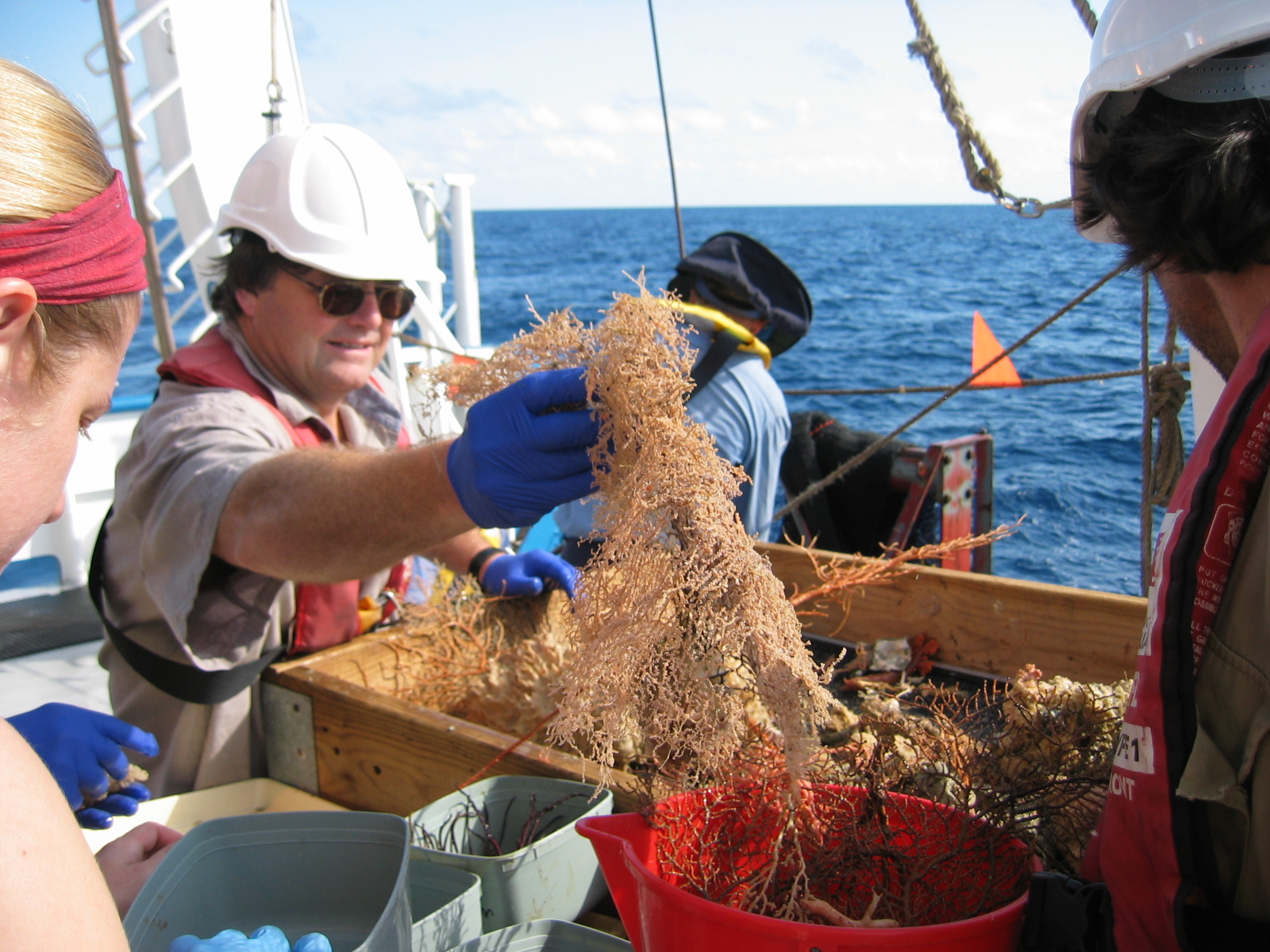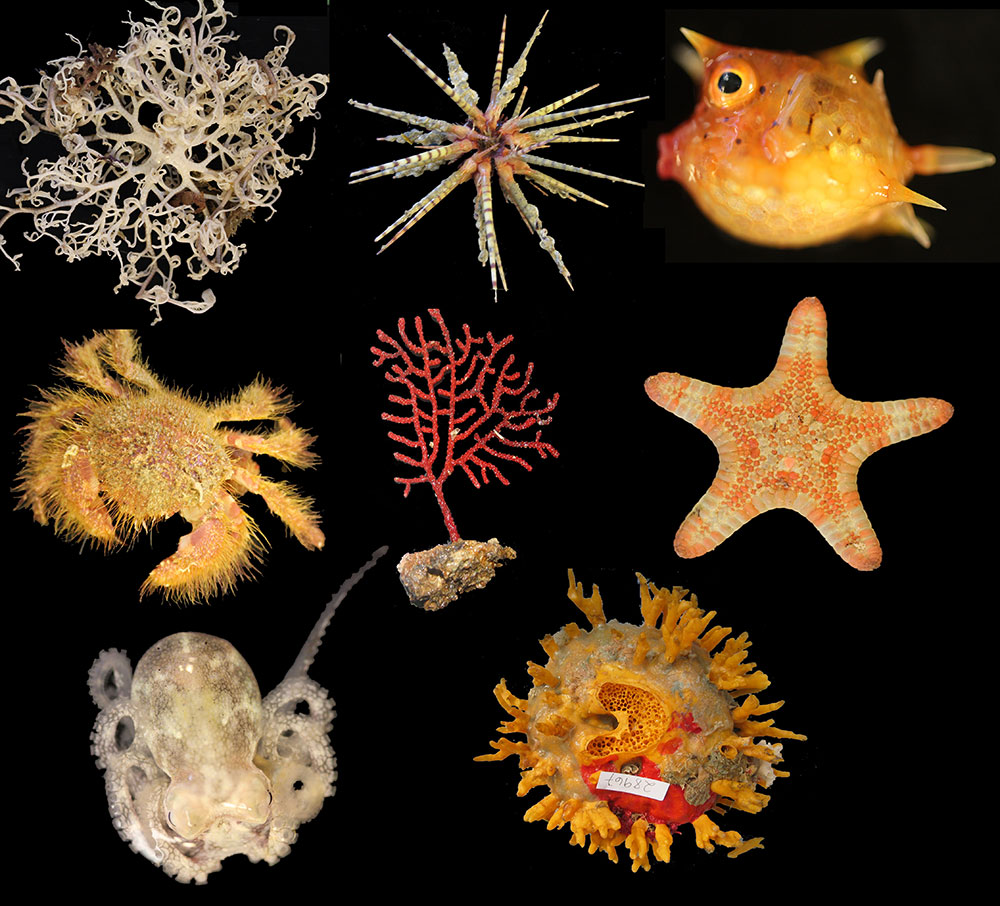Marine ecology
Page last updated:29 May 2018
Marine ecology is the study of living things in the ocean and how they interact with their environment. It is an interdisciplinary science that combines biology with physical sciences (e.g. geology, chemistry, oceanography, geophysics, statistics).
Marine ecologists at Geoscience Australia collect animals which live on the sea floor or in the sediment by using sleds, dredges, grabs, and corers. Animals can also be directly observed in their environment using underwater video and still imagery. Once collected, the animals are preserved, sorted, and identified. This information is analysed and combined with existing national environmental data and maps. This allows ecologists to understand what animals and plants live on and beneath Australia's sea floor, why they may be there, and what potential impacts they may face.
Geoscience Australia's ecological research addresses Commonwealth and state and territory government priorities related to the appropriate management of Australia's marine resources. This includes characterising the sea floor to inform environmental assessments before activity by the oil and gas industry, as well as identifying potential impacts or important communities relevant to monitoring our marine estate. Ecological data also acts as a 'common currency' between Geoscience Australia and scientists and stakeholders outside the geoscience community, allowing geoscientific results to be linked to marine biodiversity.
Acoustics and ecology
Ecologists use acoustic technologies to discover information about the sea floor and the animals on it. Acoustic technologies use a sound source and receiver and essentially operate the same way dolphins use clicking noises to locate fish. The sound waves sent out by the source travel through the water and bounce off objects such as fish or the sea floor. The sound waves then travel back to the receiver, revealing information about the shape and hardness of the object.
Geoscience Australia uses marine acoustic technologies to map the sea floor and to identify habitats such as rocky reefs which are typically home to different forms of marine life. This information is then used to choose locations from which to collect sediments, rocks, or biological samples. Acoustic methods can even be used to directly detect animals that build large reefs such as corals, molluscs and sponges. These capabilities ensure that Geoscience Australia provides accurate and topical information, contributing to the effective management of Australia's marine estate.
Ecology projects
Geoscience Australia undertakes a range of projects that integrate ecology into tangible outputs related to government priorities, including:
- NESP Marine Biodiversity Hub
- Pre-competitive data
- Lord Howe Rise environmental characterisation
- Surrogacy
- Marine Seismic Surveys and the Environment

